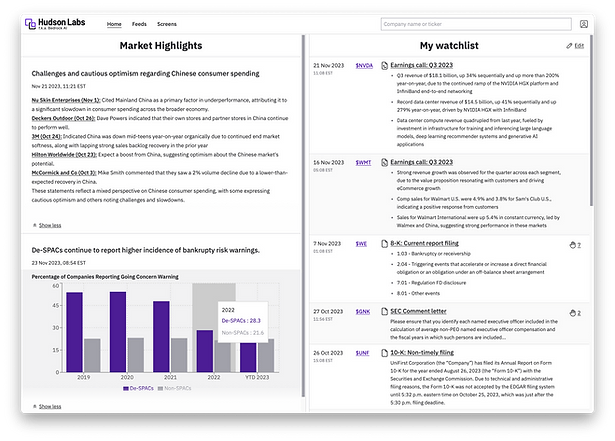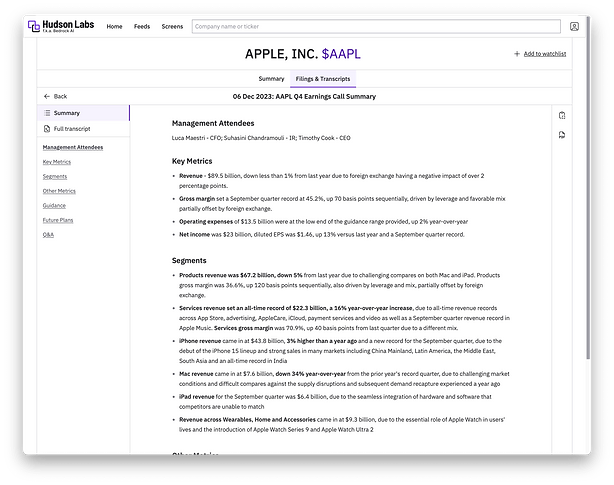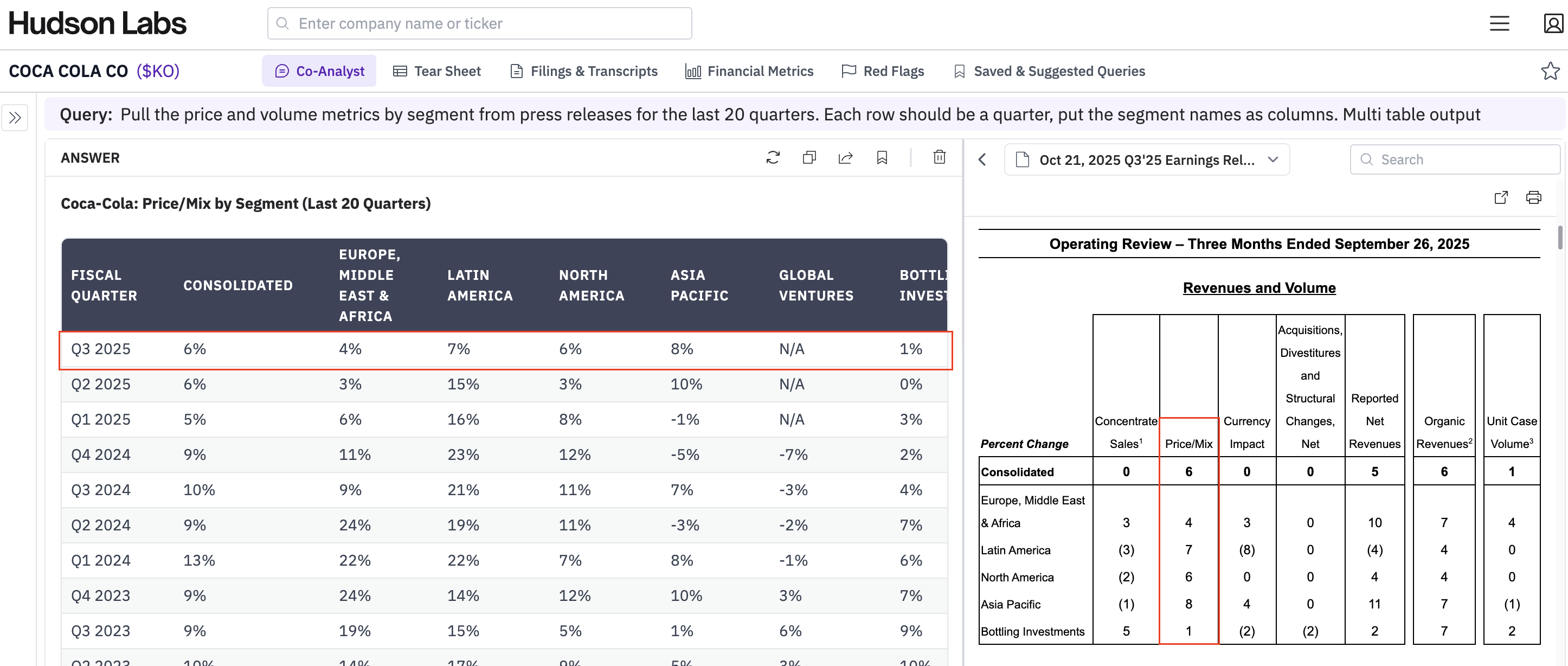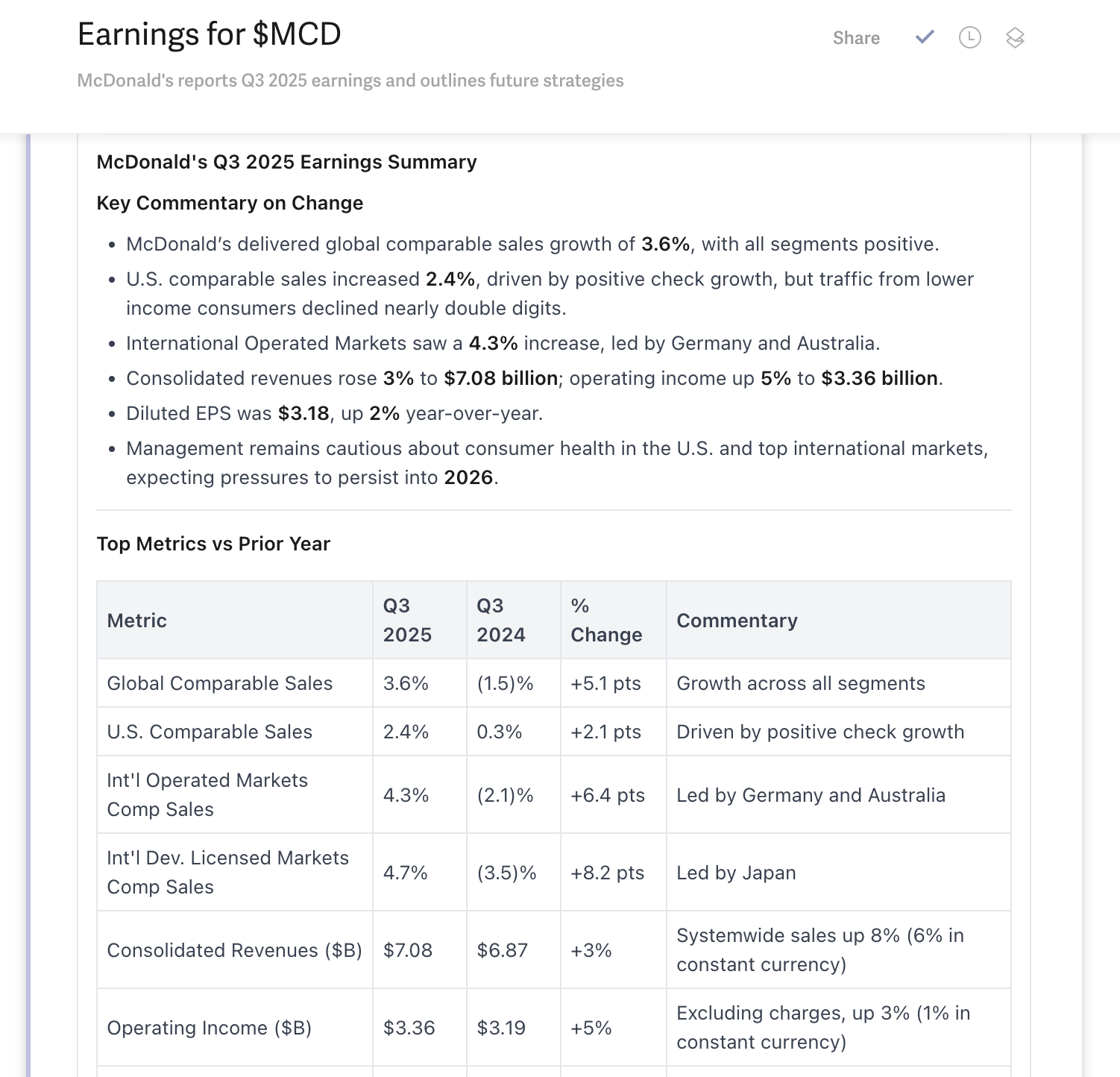How AI is Enhancing the Speed and Accuracy of Equity Analysis
An equity analyst's job requires many skills, perhaps none more important than knowing how best to spend one’s time. Researching companies is a time and labor-intensive process; spend too little time studying a company, and you may miss a key detail that affects your investment thesis. However, spending too much time on an idea has opportunity costs.
If there’s an expectation that an experienced analyst will cover several dozen stocks, but only a handful will materialize into investment ideas at any given time there is a very clear pressure to prioritise your time. Spend too much time on one company, and you risk squandering that time when you could’ve been reviewing a better prospect. Accuracy, despite being an inhibitor to efficiency, will still be critical.
Artificial intelligence (AI) may be the key to not only enhancing the efficiency of an equity analyst’s work but also their effectiveness. There are three areas in an analyst’s job where AI can make a big impact, and that’s what we’ll cover in this post.
AI-driven idea generation
There are thousands of public companies, with hundreds joining public markets every year. Keeping up with the deluge of daily news and information is a tough part of every investment analyst’s job, not just in their dedicated sector but also in the bigger domestic and international picture. Every analyst could benefit from an assistant whose job is to monitor and synthesize the news across the seemingly infinite supply of sources and experts.
AI, applied correctly, can be that assistant. Many generalist generative AI tools, however, do not perform well with this kind of work due to inherent limitations. Fortunately, there are a slew of tools already available that are designed for equity research, including for generating ideas, and some of them we even like. And the technology is improving rapidly.
With an increasingly global and fluid business, media, and information landscape, curating credible information to generate new ideas is a job in and of itself. Analysts do this, but it’s one of those tasks that we all wish we could systemise or even assign to someone else. This includes reading and summarizing earnings transcripts, identifying the key points from news, and reviewing the latest securities filings that may signal a critical moment that could ordinarily be overlooked.With this information in hand, thanks to a properly designed AI application, an analyst can focus on connecting the dots, synthesizing the information, and developing new hypotheses.

Coverage initiation and research deep dives
AI’s capabilities in coverage initiation and research can eliminate a lot of the friction in the research process, not to mention that the breadth of its research is something no analyst can replicate. While the analyst may still be the expert in their coverage and the one employing judgment to make the right investment calls, AI can proliferate and crystalise the information on which they base their decisions on.
When analysts first start looking at a new sector, building that first initiation report is among the most daunting and critical tasks of their careers. AI can help get up to speed on companies and sectors relatively quickly, which helps the analyst prioritize the workload and quickly gather insight on the sector as a whole.
Furthermore, when a new company comes on the scene or has grown to warrant enough attention, analysts may initiate coverage and rate its stock. A fair amount of information may go into an initial rating, including key SEC filings, and earnings reports—including transcripts. Artificial intelligence can summarize this information quickly and sift through the details to find the key issues.
Furthermore, when in-depth research is needed, AI can study the evolution of specific trends—say, labor issues or lease accounting—-by company or industry. A tool that can provide an in-depth summary of a specific issue can save an analyst hours of precious time, particularly if it can be generated into a standard report an analyst would otherwise have to write themselves.
Coverage maintenance
Once coverage has been initiated on a company, an AI news and filings alert function can highlight critical issues and developments automatically. This can take the form of a weekly news overview or a summary of earnings call transcripts. It’s not hard to imagine the latter example saving an analyst dozens of hours during earnings season.
For example, Hudson Labs’s red flag categories use state-of-the-art text processing to identify language that is predictive of fraud, malfeasance and earnings management. Our models assess relevance and importance based on the underlying meaning rather than simply relying on keywords.
Our technology also produces automated earnings summaries that highlights the most relevant information, and summarizes analyst questions and answers, making it easier to identify the most critical insights.

Efficiency, realized
Hudson Labs provides summaries & memos that are factual & auditable and that every equity analyst will be able to use. Hudson Labs supports idea generation by capturing qualitative themes that cannot be captured in a Bloomberg screen. Our tools save dozens of hours for every company covered, enabling broader coverage of adjacent sectors and companies.
Hudson achieves industry-leading quality through...
- Finance-specific AI models (LLMs) adapted to specific tasks, trained on more than 8 million pages of corporate disclosure.
- Breaking down complex tasks like memo generation into small subtasks for which we use specialized AI language models designed to solve that specific task e.g. topic identification. These are combined into an automated pipeline to achieve industry-leading reliability, accuracy and completeness.
- In-house financial AI research breakthroughs:
- Proprietary boilerplate/noise/”fluff” suppression techniques mean that both our AI models and our customers are more likely to see the information that matters most. This step is one of the most crucial for maintaining the quality of downstream tasks, ensuring that our summaries, memos and feeds only include high-signal data.
- Relevance ranking ensures that the right context gets fed to the AI model at the right time, so that we collect and display the information that matters most to a capital markets professional.
Our attention to detail and complex infrastructure developed over the last four years means we are able to provide detailed, complete and accurate results. Learn how we stack up against popular generative chatbots here.








